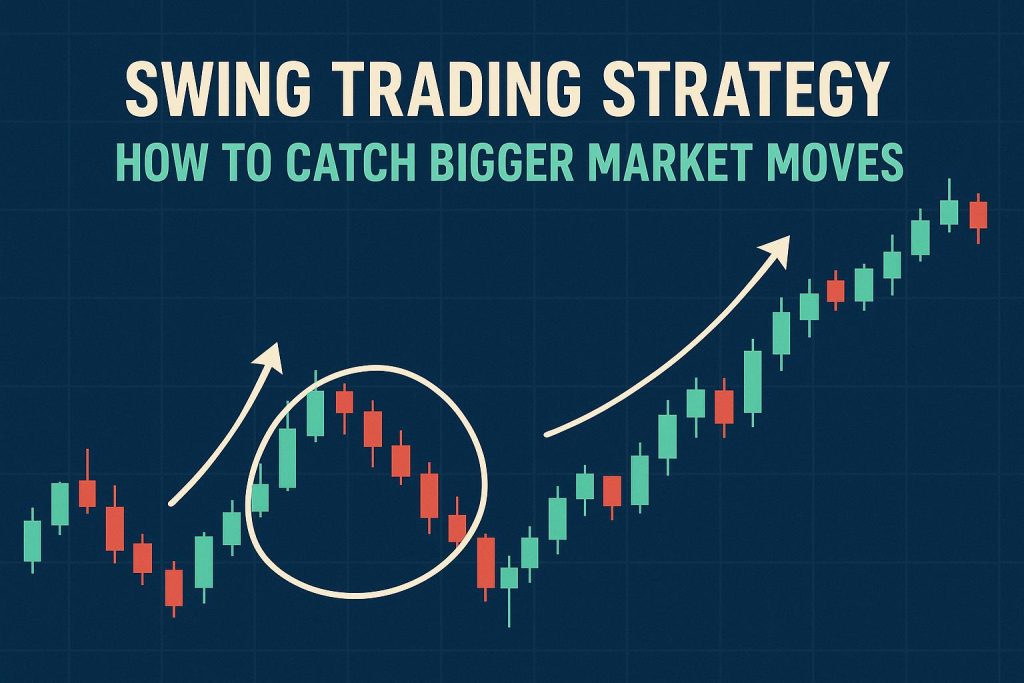
Swing Trading Strategy: How to Catch Bigger Market Moves
Written on August 28, 2025 By admin in Uncategorized
Understanding Swing Trading
Swing trading is a widely adopted strategy among traders and investors aiming to capitalize on short to medium-term price movements that occur over days to weeks. This approach is unlike day trading, which demands constant attention to market fluctuations within a single day. Swing trading provides more flexibility and the potential to capture larger market movements. By allowing trades to develop over a longer timeframe, traders can potentially reap more substantial benefits as opposed to the brief windows of opportunity typical in day trading.
The Basics of Swing Trading
The core focus in swing trading is to identify and take advantage of price swings, known as the “swing” in swing trading. These price swings can be found in both rising or bullish markets and in falling or bearish markets, offering numerous opportunities for profit during varied market conditions. This style of trading is based on exploiting market volatility to achieve gains, and it stands between day trading and long-term investing.
Key Concepts in Swing Trading
Technical Analysis: At the heart of swing trading is technical analysis, which involves using charts and various technical indicators to spot potential trading opportunities. Commonly employed indicators include moving averages, the Moving Average Convergence Divergence (MACD), the Relative Strength Index (RSI), and Fibonacci retracement levels. These tools assist traders in making informed decisions by analyzing past price movements and predicting future trends.
Chart Patterns: Recognizing chart patterns such as head and shoulders, flags, and triangles can significantly aid traders in predicting future price movements. These patterns serve as visual signals indicating potential directional shifts in the market, providing traders with critical insights for entering or exiting positions at opportune moments.
Timeframes: One of the essential considerations in swing trading is selecting the right timeframe. While long-term investors generally focus on weekly or even monthly charts, swing traders typically analyze daily and 4-hour charts. These timeframes allow traders to detect upcoming price swings, enabling them to make timely and strategic trading decisions.
Strategies for Capturing Bigger Moves
Trend Following
One of the fundamental strategies in swing trading is trend following. This involves identifying the dominant market trend and executing trades in the same direction as the trend. Utilizing moving averages and trendlines helps traders confirm the trend’s strength, allowing them to enter trades with confidence. The goal is to ride the trend until there are indications that it is losing momentum, at which point they can secure profits and reassess their positions.
Countertrend Trading
Another swing trading strategy is countertrend trading, which involves pinpointing potential reversal points where the current trend may slow or reverse. This strategy carries more risk, as it involves betting against the prevailing market trend. To execute this strategy successfully, traders often rely on oscillators like the RSI and stochastic indicators, which help anticipate overbought or oversold conditions. Countertrend trading requires a keen sense of market dynamics and disciplined trade execution.
Breakout Trading
Breakout trading is centered on identifying key levels where the price may break out into a new trend. This strategy entails setting buy or sell orders at levels where the security’s price has consistently failed to move beyond, expecting that a break will initiate a significant movement. Volume indicators are often used to confirm the strength of a breakout. When large volumes accompany a breakout, it typically indicates strong market interest and enhances the chances of trend continuation.
Managing Risk in Swing Trading
Effective risk management is imperative in swing trading. Implementing proper risk management strategies allows traders to safeguard their capital while optimizing potential gains. Here are several critical risk management techniques commonly employed by swing traders:
Setting Stop-Losses: One key aspect of risk management is utilizing stop-loss orders to limit potential losses if the market moves unfavorably against your position. By setting predefined exit points, traders can automatically close losing positions, thereby minimizing losses and preserving capital for future trades.
Position Sizing: Carefully determining position sizes is equally crucial. Ensuring that no single trade significantly impacts the trading account is a fundamental principle of risk management in swing trading. Position sizing helps control exposure to risk on each trade, preserving the account’s capital base over time.
Trade Diversification: Diversifying trades across different sectors and asset classes can also reduce overall portfolio risk. A well-diversified trading portfolio can help mitigate the impact of adverse price movements in individual trades, balancing risk exposure.
Conclusion
Swing trading serves as a potent method for capturing notable market movements over relatively short durations. This trading style combines technical analysis, disciplined risk management, and strategic planning to enhance success probabilities when capturing these dynamic market fluctuations. By remaining flexible and informed, swing traders can navigate diverse market conditions and identify opportunities as they arise. Further exploration of swing trading and related topics can enhance understanding and effectiveness in this field, with resources such as Investopedia offering valuable insights and information.
This article was last updated on: August 28, 2025